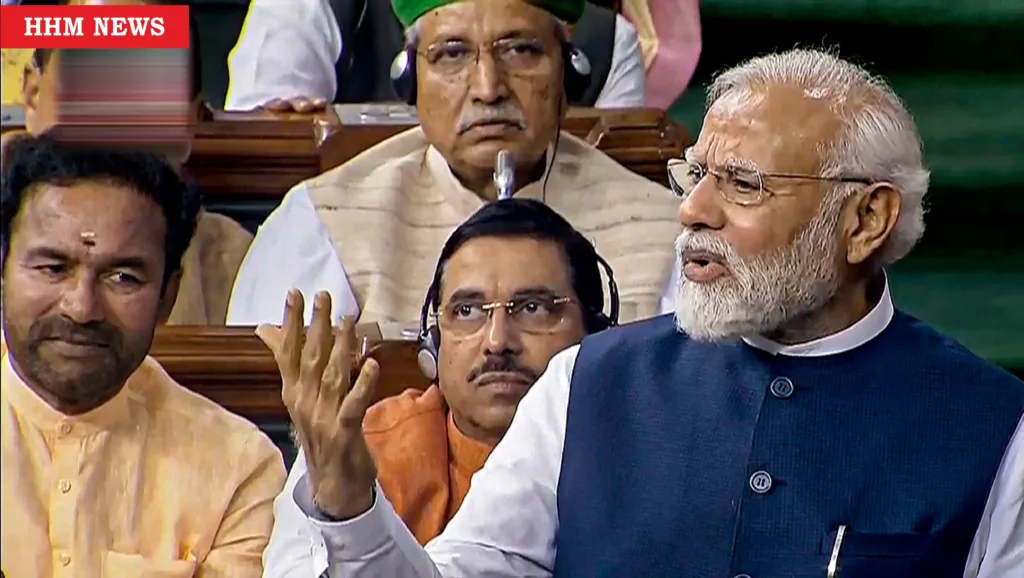In order to take on the incumbent Bharatiya Janata Party (BJP), led by Narendra Modi, in the 2017 general election, more than two dozen opposition groups in India united in July.
Composed of smaller, regional parties and the main opposition Congress, the coalition called itself INDIA, a play on words that stands for the somewhat flowery Indian National Developmental Inclusive Alliance.
The coalition’s ability to maintain unity and reach a tactical seat-sharing agreement—which guaranteed a single primary candidate in every constituency—was critical to the coalition’s victory over the BJP.
A dispersed opposition always helps the governing incumbent under India’s “first past the post” multiparty system, where the winner gets all. under the 2019 general election, Mr. Modi‘s party garnered 37% of the national vote but won an astounding 303 of the 543 seats.
However, just six months after its founding, India’s disorganized opposition coalition is in chaos. The most recent catalyst was regional leader Nitish Kumar’s decision to rejoin the BJP after leaving a state-level ruling coalition in the northern state of Bihar. Eighteen months prior, Mr. Kumar had left a coalition headed by the BJP. From now on, the BJP is counting on Mr. Kumar’s Janata Dal (United) party to win most of the 40 seats in the state.
In India’s chaotic politics, turncoats are not unusual, but many were surprised by the 72-year-old Mr. Kumar’s defection. Mr. Kumar was once considered a possible prime minister of an opposition coalition. “The INDIA alliance suffers a great loss with his departure. Additionally, it conveys the message that the partnership is failing, according to Indian political expert Gilles Verniers.
But that’s not all. Mamata Banerjee of the Trinamool Congress (TMC) in West Bengal and Arvind Kejriwal of the Aam Aadmi Party (AAP) in Delhi and Punjab, two regional leaders in the coalition, have broken with the Congress and said unequivocally that they will pursue independent paths in their respective states. Stated differently, minimal to nonexistent seat-sharing is anticipated in these states.
This young alliance’s discord occurs at a moment when Mr. Modi appears to be unstoppable.
In the vast Hindi-speaking heartland of India, the BJP won handily in December’s state elections in Chhattisgarh, Rajasthan, and Madhya Pradesh. In January, Mr. Modi inaugurated the much-anticipated spectacular new Ram temple in Ayodhya, perhaps signalling the unofficial start of the BJP’s political campaign for the polls in April and May.
“The BJP’s situation has drastically shifted since December. The chances of the party winning the polls now are higher, according to Rahul Verma of the Delhi-based think tank Centre for Policy Research.
Different viewpoints regarding the Congress party, headed by Rahul Gandhi, which is the only pan-Indian rival to the BJP, contribute to the opposition alliance’s fragility. With only 52 seats and fewer than 20% of the vote in 2019, the party is still in serious trouble.
“It then makes unreasonable demands for seats that regional partners are unwilling to accommodate,” says Verniers. “The perception is that the Congress is a toxic alliance partner because of its own weakness and ability to drag down the ticket.”
Many think it would be unjust to place the full blame for the opposition’s problems on the Congress. In the fiercely competitive Indian political sphere, pragmatism rules as each party puts its own interests first.
Each and every other [INDIA] alliance member prioritizes their own interests over the good of the group. Their own status is what counts to them. “Can they return to the state they control if they lose the general election?” Mr. Verniers asks.
However, seat sharing is just one side of the conflict. Scholars claim that the opposition is incapable of offering a convincing counternarrative to the BJP’s well-liked fusion of development and Hindu nationalism. Additionally, as political scientist Asim Ali points out, a sizable portion of the media, industry, and public embrace this narrative. “Issues only come to the fore when they have widespread social support,” according to him.
The opposition has no shortage of topics to focus on. They have called attention to Mr. Modi’s “failure” to address the serious employment situation. They have denounced the anti-Muslim rhetoric of the BJP, as well as its purported assaults on think tanks and the media and intimidation of political opponents by government agencies. They have banded together in protest to support the over 140 opposition MPs who were suspended in December for interfering with parliamentary business.
However, as Mr. Verniers notes, there doesn’t seem to be a “ideological binding force” bringing the opposition together, especially when it comes to the strong Hindu nationalism that Mr. Modi and the BJP are promoting.
It is true that forming an alliance to oppose the well-resourced and well-oiled BJP under the leadership of a massively popular leader is easier said than done. The dispersed opposition needed decades to unite and overthrow the Congress, which dominated Indian politics for thirty years, from independence to 1977.
When civil liberties were banned under Indira Gandhi’s Emergency rule, the Janata Party alliance brought together several groups, including socialists and Hindu nationalists, to fight against it. (The leaders’ personal aspirations and internal conflicts caused the coalition to fall apart in less than two years. However, it was successful in overthrowing a rival thought to be unbeatable.)
According to Mr. Verma, “only a severe existential crisis or exogenous shock can foster the conditions necessary for [disparate] allies to unite and mount a formidable challenge to a dominant ruling party.” “In normal circumstances, it is difficult” .
Is the partnership with India doomed? “The alliance is in troubled waters, but they can still find ways to contest together,” adds Verma. He contends that rather than depending on the results of regional allies in their own states, the elections depended on the Congress’ performance in more than 250 seats in the BJP stronghold of northern and western India.
by,HHM

